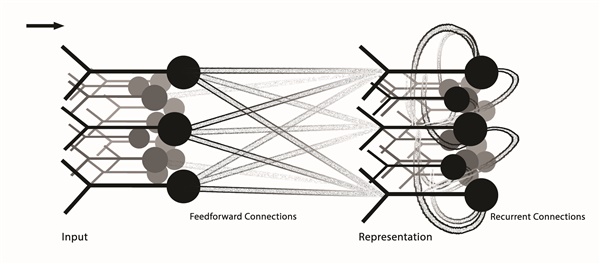A recent Ben-Gurion University of the Negev and Weizmann Institute of Science study proposes that learning processes may drive networks of neurons in the brain to operate in the vicinity of a unique border state. On the one hand, adapting to work at this state could enable peak performance in the ability to process incoming sensory information. On the other hand, it may also entail a risk of crossing over into an undesirable regime of fictitious neural representations, namely hallucinations. The study provides a theoretical basis for the idea that the brain operates near a critical state and is important for both characterizing healthy brain dynamics and understanding potential mechanisms for the development of brain disorders.
The study was published on February 16, 2016 in the open-access journal PLoS Computational Biology by BGU researcher Dr. Oren Shriki, from the Department of Cognitive and Brain Sciences, in collaboration with Dovi Yellin from the Department of Neurobiology at the Weizmann Institute of Science.
Neuronal networks in the brain include feedforward connections that convey information from one processing stage to another. However, neurons in each processing stage also talk to one another through recurrent connections. Recurrent networks display a rich repertoire of dynamic behaviors. In particular, they can maintain activity even without objective input, a state which can be interpreted as a hallucination. A major question is how the recurrent connections contribute to information representation in the brain and how they should evolve to optimize information representation. The researchers developed and studied a mathematical model of a neuronal network, which includes both feedforward connections from one layer of neurons to another, and recurrent connections among the neurons at the second layer, which represents the information.

Similar to real neuronal networks in the brain, the network model is presented with external sensory inputs, and the recurrent connections among the neurons evolve through a learning process. The plasticity rules that govern the changes in the recurrent connections are designed to improve the information representation. The researchers found that the network tended to operate close to the border between normal information processing and a state of "hallucinations."
This can be explained through a simple analogy: Imagine that you have to speak through a microphone to a large audience. When you increase the volume of the amplifier, at some point you start to hear a sharp tone, which results from feedback between the microphone and the amplifier. To avoid this tone, which does not convey information, but still maintain a high volume, you slightly decrease the volume. Similarly, optimal sensitivity to external inputs is achieved when the recurrent dynamics in the neuronal network are strong enough to amplify the external inputs, but not too dominant to generate hallucinations. These findings provide insights into what may cause several neurological and psychiatric disorders. In particular, these networks are very sensitive to small changes in the strength of the connections among the neurons. Such small changes can shift an otherwise healthy neuronal network into hallucinations and manifest as a neurological disorder. For example, it is known that during sensory deprivation, people start to develop hallucinations. The model proposes an interesting explanation for this phenomenon: when the inputs to the network are attenuated, the network approaches the critical point to further amplify the inputs, but may also cross over to the undesired regime of hallucinations.
This research was supported by the ISRAEL SCIENCE FOUNDATION (grant No. 754/14 to OS).
DOI: 10.1371/journal.pcbi.1004698
